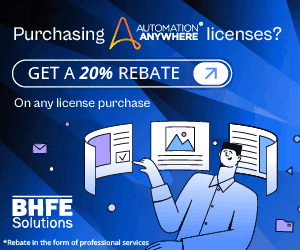Scaling RPA Throughout Enterprises: From Pilots Programs to Enterprise-Wide Successes
Robotic Process Automation (RPA) has already become a game-changer for many enterprises seeking efficiency, productivity, and cost reduction. Initially, many organizations opt for pilot projects to test the waters, but the real value lies in scaling RPA across the entire enterprise. This journey from pilot projects to enterprise-wide deployment comes with its challenges and opportunities.
Scaling from Pilot Projects to Enterprise-Wide Deployment
Starting with a pilot project is a common approach when implementing RPA in an organization. It allows companies to understand how RPA works, identify potential challenges, and assess its impact on specific processes. However, the true benefits of RPA become evident when it’s scaled across the enterprise. Here’s how you can successfully make the transition:
a.) Define Clear Objectives and Roadmap:
Before scaling RPA, it’s essential to have a well-defined strategy and roadmap. Clearly define the objectives, processes, and departments where RPA will be implemented. Having a roadmap ensures a structured and efficient expansion.
b.) Select the Right RPA Platform:
Choosing the appropriate RPA platform is critical for scalability. Look for platforms that offer features like centralized management, monitoring, and security. An enterprise-grade RPA platform will make it easier to deploy and manage a large number of bots.
c.) Build a Strong Governance Model:
As you move from pilot projects to full-scale deployment, establish a robust governance model. This includes defining roles and responsibilities, creating standardized procedures, and ensuring compliance with regulations. A strong governance framework prevents chaos and mismanagement as RPA expands.
d.) Automation of Core Business Processes:
Identify the core business processes that would benefit the most from automation. These are the processes that have a significant impact on productivity, accuracy, and cost savings. Prioritize these processes for RPA implementation.
e.) Training and Change Management:
Scaling RPA involves a change in the way employees work. Provide adequate training to your workforce to ensure they can collaborate effectively with the bots. Address any concerns or resistance to change through change management initiatives.
Managing and Maintaining RPA Bots at Scale
Once you’ve successfully scaled RPA across your enterprise, the next challenge is managing and maintaining a growing fleet of bots. Efficient management and maintenance are crucial for ensuring continuous value and ROI. Here’s how to do it:
1. Centralized Monitoring and Reporting:
Implement a centralized system for monitoring the performance and health of your RPA bots. Real-time dashboards and reports allow you to quickly identify any issues and take immediate action.
2. Regular Updates and Maintenance:
Just like any other software, RPA bots require updates and maintenance to stay effective. Regularly review and update your automation scripts to adapt to changes in processes or technologies.
3. Scalable Infrastructure:
Ensure that your IT infrastructure can support the growing number of bots. Consider factors like server capacity, network bandwidth, and security to maintain a seamless RPA operation.
4. Security and Compliance:
As the number of bots grows, security and compliance become even more critical. Implement stringent security measures to protect sensitive data, and ensure that your RPA implementation complies with relevant regulations.
5. Bot Lifecycle Management:
Have a clear process for bot lifecycle management. This includes onboarding new bots, decommissioning old ones, and ensuring that they align with changing business needs.
6. Continuous Improvement:
RPA is not a one-time implementation; it’s an ongoing process. Continuously seek opportunities to improve and expand RPA capabilities. This might involve integrating with other technologies like AI or machine learning.
Scaling RPA from pilot projects to enterprise-wide deployment is a significant undertaking, but the benefits are substantial. With the right strategy, tools, and mindset, organizations can streamline processes, reduce costs, and improve overall efficiency. However, the journey doesn’t end with deployment – managing and maintaining RPA bots at scale is equally crucial. By implementing best practices in governance, monitoring, and maintenance, enterprises can ensure that RPA remains a valuable asset in their quest for digital transformation.
In summary, RPA scaling is not just about adding more bots; it’s about integrating automation into the fabric of your organization, adapting to evolving needs, and continuously optimizing for better results.




